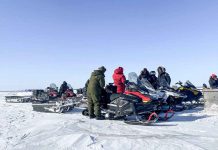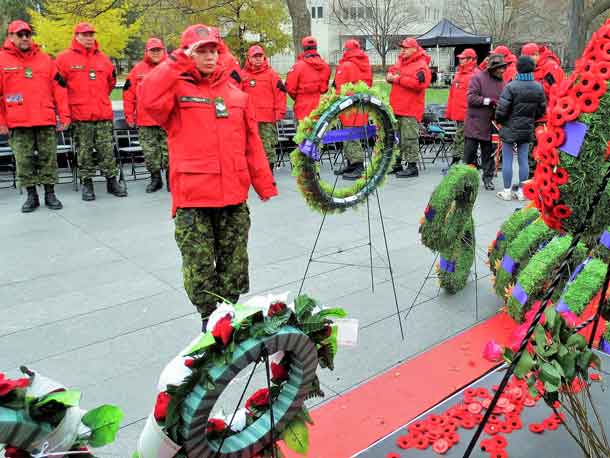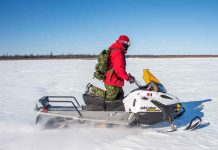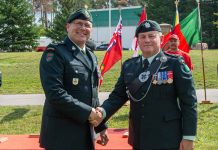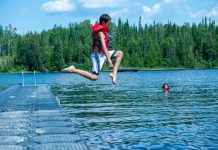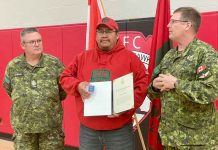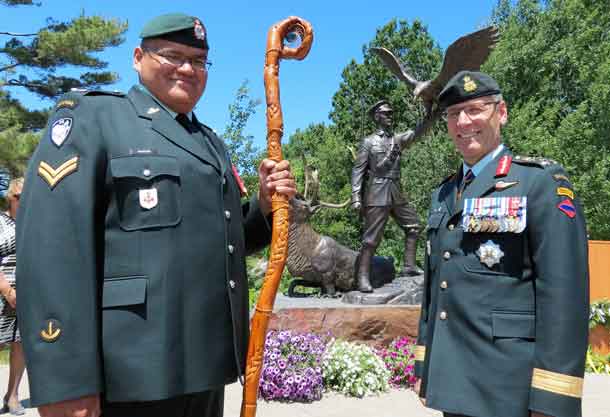

PARRY SOUND – A ceremony on National Aboriginal Day honouring Canada’s most decorated indigenous soldier impressed a group of Canadian Rangers and Junior Canadian Rangers from remote First Nation communities from across northern Ontario who participated in it.
The highlight of the impressive event in Parry Sound was the unveiling of a statue honouring Sergeant Francis Pegahmagabow, who won a Military Medal and two bars in the First World War – the equivalent of three Military Medals – for bravery in the field.
The ceremony was held before a large crowd, including many of his descendents. It featured the pomp and precision of a 50-member Canadian Armed Force guard of honour and the sounds of aboriginal drumming and singing. It was attended by Lieutenant-General Marquis Hainse, the commander of the Canadian Army, and National Chief Perry Bellegarde of the Assembly of First Nations.
“It was awesome to be here,” said Corporal Paula Nakogee of the Fort Albany Canadian Ranger patrol. “I felt chills. I felt emotions running through my heart. I felt truly honoured to be here. I didn’t really know who he was until I heard the speeches. Now I know he was an Ojibway hero. It made me proud to be here as a Canadian Ranger.”
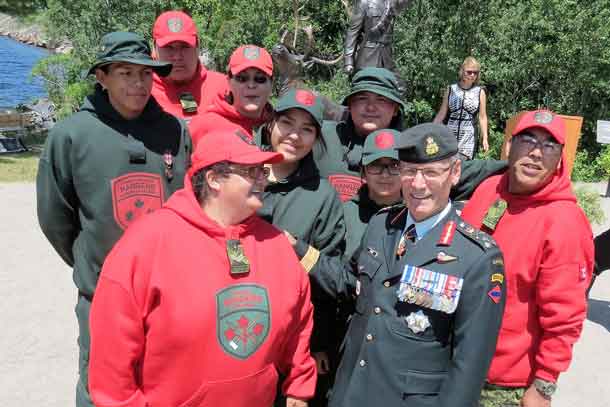
It was a reaction shared by the three other Canadian Rangers and four Junior Canadian Rangers at the ceremony. Junior Ranger Kirsten Fiddler of Sandy Lake said it was the first time she had attended such a large indigenous event. “It made me proud to be here and to be aboriginal,” she said..
Canadian Rangers are part-time army reservists. Junior Rangers are Canadian Armed Forces program for youth aged 12 to 18 in remote communities across the North.
Sergeant Pegahmagabow was born on what is now the Shawanaga First Nation near Parry Sound. He joined the Canadian Army within days of Canada’s declaration of war on Germany in August, 1914, and volunteered for overseas service. He served as a scout and sniper in France.
He received a gunshot wound to the leg and was buried by shell explosions. He is unofficially credited with 378 kills as a sniper. His exploits made him one of only 38 Canadians to be awarded the Military Medals and two bars in the First World War. He is the only indigenous soldier to receive three military awards for bravery.
At the end of the war he returned to his reserve, and like other indigenous soldiers, he was forced to live under the then Indian Act, which restricted his movements and activities. He became an activist in demanding the removal of restrictions limiting the rights and freedoms of indigenous peoples. He served as chief of what is now the Wasauksing First Nation from 1921-25 and from 1942-45, and as a councilor from 1933-36. He helped found the Brotherhood of Canadian Indians, the first national aboriginal organization, and served a term as supreme chief of the National Indian Government. He died in 1952.
He served during and after the war with the Northern Pioneers and was serving with them as a reserve soldier when they amalgamated with the Algonquin Regiment.
The ceremony and the unveiling of the statue impressed Lieutenant-Colonel Kenneth McClure, commanding officer of the Algonquin Regiment.
“This was my first Aboriginal event of any significance,” he said. “It was impressive.
“It wasn’t just about Sergeant Pegahmagabow. It was about aboriginal veterans, Canadian veterans, non-aboriginal veterans, and all soldiers. There was a tremendous amount of respect and honour. Sergeant Pegahmagabow was honoured today and that was great. He deserves it.”
The Canadian Rangers at the ceremony were Master Corporal Linda Kanate of North Caribou Lake, Corporal Paula Nakogee and Ranger Kendall Nakogee, both of Fort Albany, and Ranger Robert Wynne of Kashechewan. The Junior Rangers were Dawson Baxter of Constance Lake, Kirsten Fiddler of Sandy Lake, Amber Lawson of Mishkeegogamang, and Jack Linklater Jr. of Attawapisksat.
(Sergeant Peter Moon is the public affairs ranger for the 3rd Canadian Ranger Patrol Group at Canadian Forces Base Borden.)

